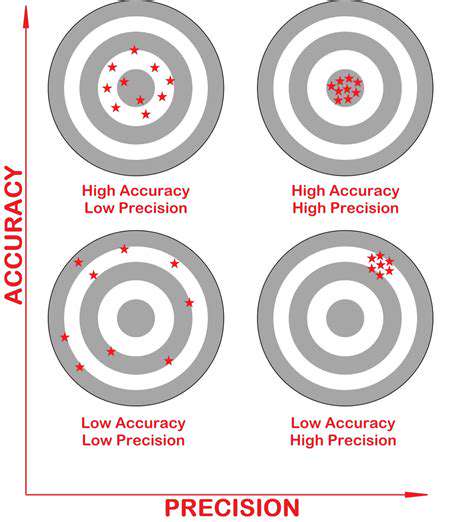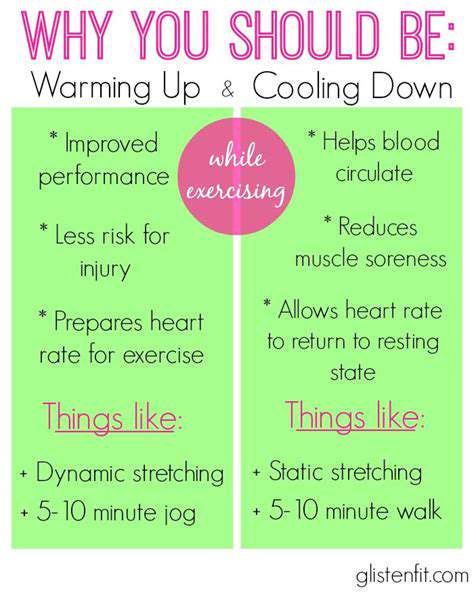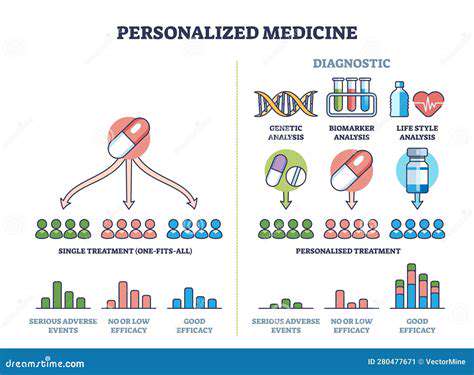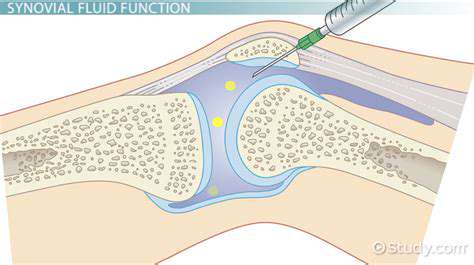Understanding the Role of the Ulnar Nerve in Hand Function
Origin and Course
The ulnar nerve, a crucial component of the brachial plexus, originates from the medial cord of the brachial plexus, formed by the C8 and T1 spinal nerve roots. Its journey through the arm is a complex one, beginning deep within the shoulder region. Initially, the nerve travels alongside the axillary artery, passing beneath the pectoralis minor muscle, before entering the arm proper. Understanding this initial course is vital for comprehending potential compression points along its path.
As the ulnar nerve descends through the arm, it's important to note its relationship to surrounding structures. The nerve maintains a close proximity to the medial aspect of the arm, a fact that is significant in considering potential entrapment or injury mechanisms. Its deep location within the arm, often surrounded by other tissues, renders it vulnerable to compression or trauma.
Branches and Distribution
The ulnar nerve's distribution within the forearm and hand is extensive and crucial for a range of functions. It provides sensory innervation to the medial aspect of the hand and the pinky finger, as well as part of the ring finger. This sensory component is vital for touch, pain, and temperature perception in these regions.
Motor branches of the ulnar nerve control specific muscle groups in the forearm and hand, particularly those responsible for fine motor skills and grip strength. This intricate network of branches ensures precise control of movements, from subtle adjustments to powerful grips, highlighting the nerve's role in dexterous hand function.
Anatomical Landmarks
Several key anatomical landmarks are crucial for understanding the ulnar nerve's position and potential points of vulnerability. The medial epicondyle of the humerus, a prominent bony protrusion on the inner elbow, serves as a significant landmark, with the nerve passing directly behind it. This location is frequently implicated in ulnar nerve entrapment.
The cubital tunnel, a passageway located on the inside of the elbow, is another vital anatomical landmark. The ulnar nerve passes through this tunnel, making it a potential site for compression, which can lead to a condition known as cubital tunnel syndrome. Knowing these anatomical landmarks is essential for accurate diagnosis and treatment.
Potential Compression Sites
The ulnar nerve, due to its course and proximity to various bony structures and tissues, is susceptible to compression at several points along its path. The cubital tunnel, as mentioned previously, is a common site of compression, often exacerbated by repetitive strain or prolonged bending of the elbow. This can lead to symptoms such as numbness, tingling, and pain in the hand and forearm.
Other potential compression sites include the medial epicondyle of the humerus and the tunnel of Guyon at the wrist. Understanding these potential compression points is vital for evaluating and addressing ulnar nerve dysfunction, focusing on the specific location of the problem.
Clinical Significance
Ulnar nerve injuries or compression syndromes can lead to a range of debilitating symptoms, impacting various aspects of daily life. These can range from mild discomfort to significant loss of function, particularly in hand dexterity and grip strength. Numbness, tingling, and pain are common complaints, often worsening with activities that place pressure on the nerve.
Understanding the anatomy of the ulnar nerve is paramount for accurate diagnosis and effective treatment of associated conditions. This knowledge guides clinicians in performing appropriate assessments, selecting appropriate interventions, and ultimately, restoring optimal function.
Relationship to Other Structures
The ulnar nerve's course is intricately linked to other important structures in the arm. Its relationship with the medial aspect of the arm and its proximity to blood vessels and other nerves are crucial factors to consider. Understanding these relationships is essential for avoiding inadvertent damage during procedures or interventions in the region.
The ulnar nerve's relationship to the surrounding muscles and tendons is also critical. Potential for nerve compression is influenced by the relative positioning of these structures. This anatomical interplay underscores the complexity of the ulnar nerve's pathway and the meticulous care required for its preservation and treatment.
Motor Functions: Precision and Power

Motor Function Precision
Precision in motor function is crucial for a wide range of daily activities, from writing intricate details to performing delicate surgical procedures. It involves the ability to execute movements with accuracy and control, enabling us to manipulate objects with finesse and precision. This intricately coordinated process relies on a complex interplay of neural pathways, muscle fibers, and sensory feedback loops. Precise motor control is paramount for activities requiring minute adjustments and exacting movements. Furthermore, maintaining this level of precision is essential for overall well-being and the ability to perform tasks efficiently and effectively.
The brain's intricate network of neurons plays a vital role in coordinating these precise movements. Neurons fire in a highly orchestrated sequence, sending signals to muscles to execute specific actions. Sensory feedback, such as touch and proprioception, is constantly relayed to the brain, allowing for real-time adjustments and refinements of movements. This constant feedback loop is essential for maintaining accuracy and preventing errors in execution.
Motor Function Power
Motor function power encompasses the ability to generate force and strength for various activities. This includes tasks ranging from lifting heavy objects to performing strenuous physical exercises. The strength and power generated by our muscles are essential for navigating our environment and interacting with the world around us. Power is crucial for activities demanding significant force output, like sports, labor, and daily tasks like carrying groceries.
The generation of power relies on the recruitment of multiple muscle fibers, with the degree of recruitment varying depending on the demands of the task. Factors such as muscle size, fiber type, and neural activation patterns all contribute to the overall power output. Understanding these factors is crucial for optimizing performance in various physical activities.
Furthermore, the efficiency of energy transfer within the muscles is a critical component of power generation. Optimizing this process can lead to improvements in overall performance and endurance.
The Interplay of Precision and Power
While precision and power in motor function often appear as distinct concepts, they are intrinsically linked. Many activities require a balance between both, demanding the ability to generate sufficient force while maintaining control and accuracy. For example, a baseball pitcher needs both the power to throw the ball at high velocity and the precision to control its trajectory.
The ability to seamlessly integrate precision and power is a hallmark of skilled performance in various fields. From musicians playing intricate pieces to surgeons performing complex procedures, the fine-tuned coordination of these two aspects of motor function is essential. This interplay highlights the sophisticated nature of the human motor system.
In conclusion, understanding the interplay between precision and power in motor function is critical for comprehending the complexity of human movement and the remarkable capabilities of our bodies.
The Importance of Early Detection and Intervention

Early Detection: A Foundation for Effective Treatment
Early detection of diseases, particularly chronic conditions, is crucial for improving patient outcomes and quality of life. By identifying a problem early on, healthcare professionals can often implement interventions that are more manageable and less invasive. This early intervention can significantly reduce the severity of the disease and prevent long-term complications.
Early detection allows for a more personalized approach to treatment. The earlier a condition is diagnosed, the more opportunities there are to tailor treatment plans to the specific needs of the individual patient, maximizing the chances of successful outcomes.
Preventive Measures and Screening
Implementing preventive measures and regular screening protocols are essential components of early detection strategies. These strategies aim to identify potential health issues before they manifest as noticeable symptoms. Preventive measures can range from lifestyle changes, such as adopting a healthy diet and engaging in regular exercise, to vaccinations and routine checkups.
Impact on Treatment Outcomes
Early detection significantly impacts treatment outcomes. When a disease is detected early, the extent of damage to the body is often less severe, allowing for more effective and less aggressive treatment plans.
This can lead to better responses to therapy and a higher likelihood of achieving remission or cure. The earlier a condition is addressed, the greater the chance of achieving a positive outcome and reducing the long-term effects of the disease.
The Role of Public Awareness Campaigns
Public awareness campaigns play a vital role in promoting the importance of early detection. These campaigns educate the public about the signs and symptoms of various diseases, empowering individuals to take proactive steps in their health management. By raising awareness, individuals can become more vigilant about their own health and seek prompt medical attention when necessary.
Technological Advancements in Diagnostics
Technological advancements in diagnostic tools have revolutionized the field of early detection. These advancements have led to more sensitive and accurate tests, enabling healthcare providers to identify diseases at earlier stages, even before symptoms appear. The development of sophisticated imaging technologies and genetic testing methods has greatly improved the ability to detect diseases early on.
Cost-Effectiveness of Early Detection
Early detection strategies are often more cost-effective in the long run. Treating a disease in its early stages can significantly reduce the overall healthcare costs associated with managing the condition over time. Early intervention can prevent the need for expensive, extended hospital stays and treatments, which can be extremely beneficial for both the patient and the healthcare system. This is particularly true for chronic diseases that require ongoing management.











